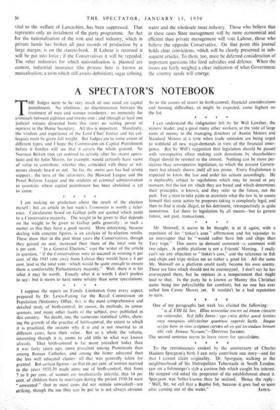I suppose the report on Family Limitation from every aspect,
prepared by Dr. Lewis-Faning for the Royal Commission on Population (Stationery Office, 4s.), is the most comprehensive and detailed study of birth-control, its causes, its methods, its conse- quences, and many other facets of the subject, ever published in this country. No doubt, too, the numerous statistical tables, show- ing the growth of the practice of birth-control, the extent to which it is practised, the reasons why it is and is not resorted to in different cases, have their value. But as a whole the volume, interesting though it is, seems to add little to what was known already. That birth-control is far more prevalent today than it was forty years ago, more prevalent among Protestants than among Roman Catholics, and among the better educated than the less well educated classes—all that was generally taken for granted. But certain figures—as that 66 per cent. of women married in the years 1935-39 made some use of birth-control, that from 7 to 8 per cent, of women are involuntarily infertile, that 14 per cent. of children born to marriages during the period 1930-34 were " unwanted" (but in most cases did not remain unwanted)—are striking, though the use they can be put to is not always obvious. As to the causes of resort to birth-control, financial considerations and housing difficulties, as might be expected, come highest on the list.






























 Previous page
Previous page